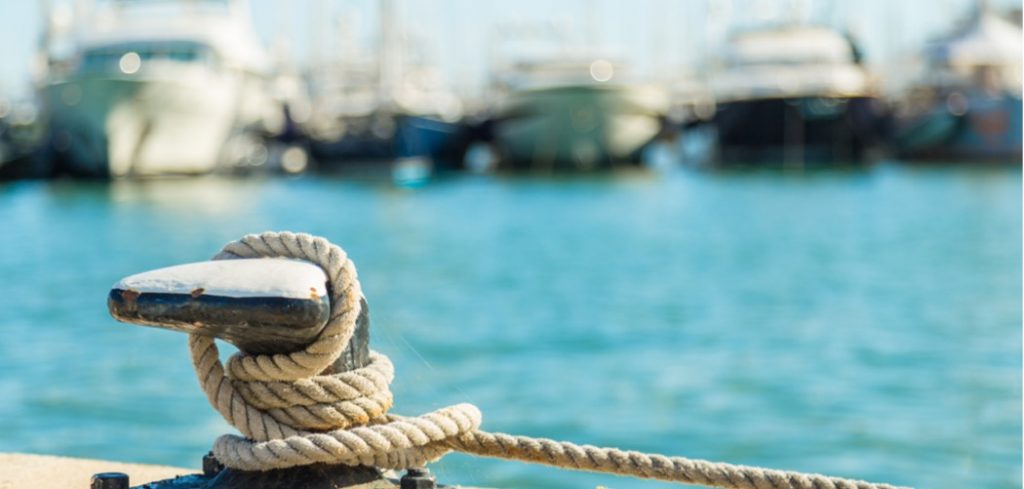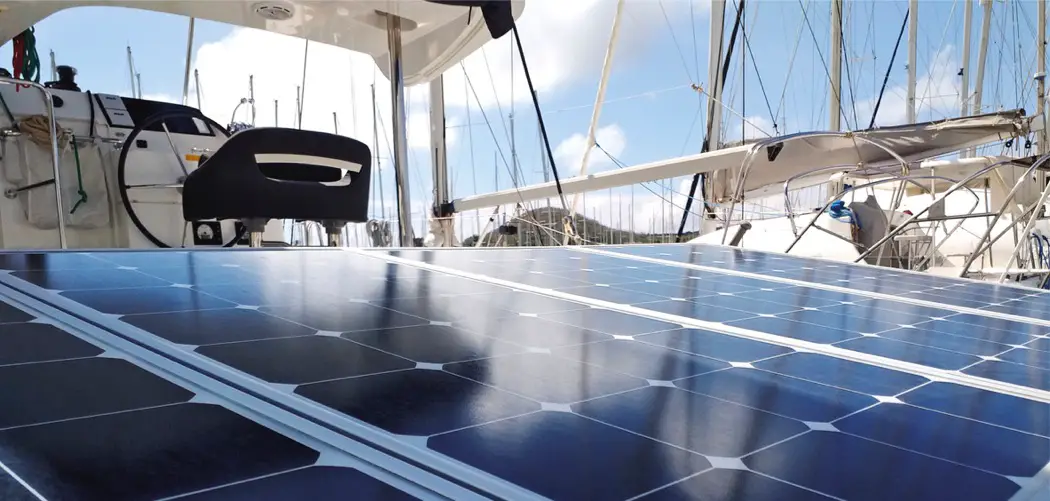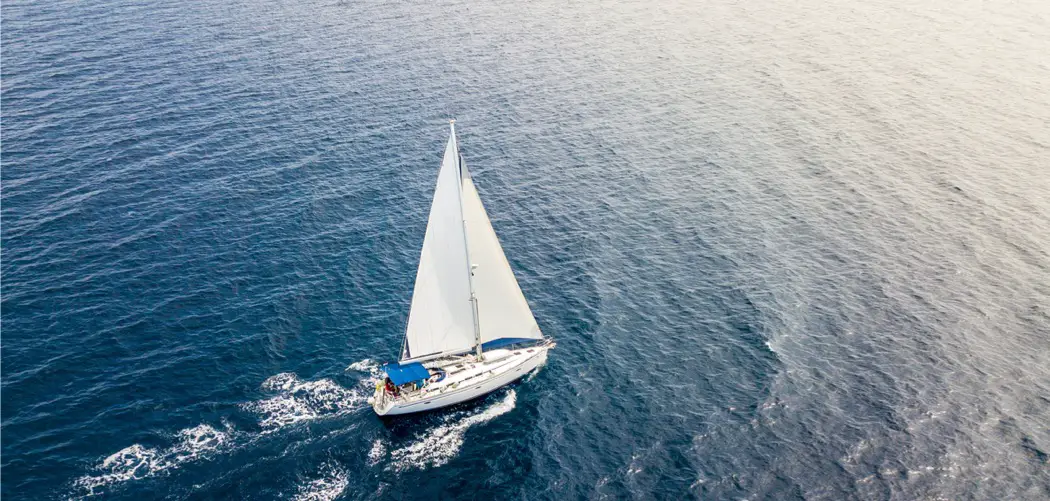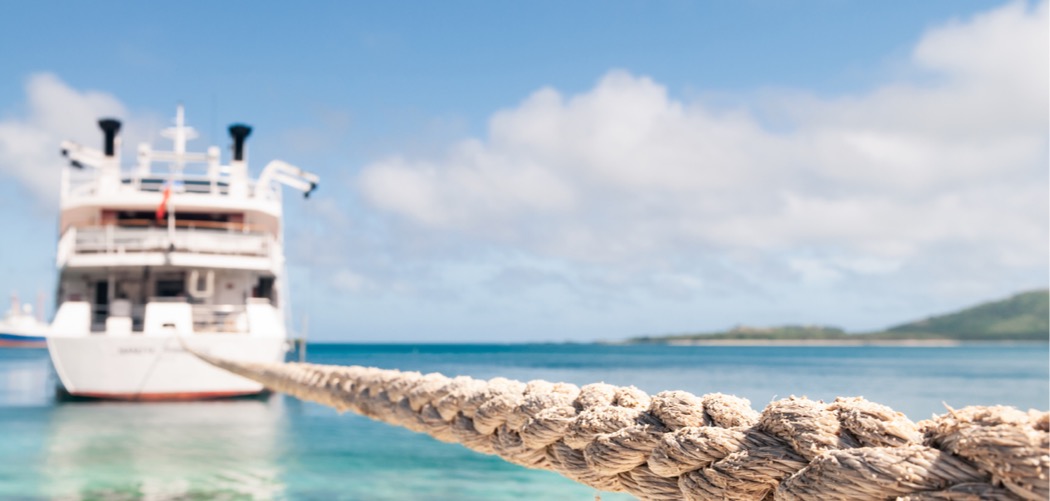When we measure the speed of most vehicles, we use miles per hour or kilometers per hour,
depending on where you live. This is a system that most people are familiar with and feel
comfortable using. So, when they get on a boat and hear the captain telling them the speed in knots, it’s no wonder they get confused.
Having to learn an entirely new system for measuring speed can feel daunting but it’s something that’s always used when you’re on the water. So, you’re going to need to understand it and get to grips with how and why it’s used. But why do boats use knots and not miles per hour?
Boats use knots because the speed needs to be relative to the curvature of the earth. This system is used in conjunction with nautical miles which also take the earth’s curve into account.
Of course, there’s a lot more to learn on the subject so I’d like to go into a little more depth. Once you’ve finished reading this guide, you’ll no longer feel confused over what seems to be a very complex topic. But it really isn’t. Let’s dive in and explore.
Table of Contents
What Is A Knot?
The term knots refers to nautical miles per hour and this is something I’ll explain in more detail later on. But for now, let’s take a look at where this term came from; I think you’ll find it pretty interesting.
Many years ago, ancient seamen didn’t have the technology we have today to see how quickly their vessel was moving so they had to come up with more innovative methods. They would take something like a piece of wood, that would float on the water, and throw this over the ship’s bow. They would then count how long it took before the object passed the stern to calculate their speed and the method was called the Dutchman’s Log.
However, it’s obvious that things could have been a little more reliable so new methods were created and at the end of the 1500s, a chip log was used instead. Sailors would take a piece of rope and tie knots in it at regular intervals. They would then attach a wedge of wood, known as a chip, to one end of the rope and throw this behind their vessel.
With the ship moving along, the sailor would allow the rope to roll out for a predetermined length of time. During this time, they would count how many of the knots in the rope had passed over the stern and this would tell them how many ‘knots’ they were traveling at. This was then translated into nautical miles and the system we see today.
What’s The Difference Between A Nautical Mile, A Standard Mile And A Kilometer?
Over the years, there was some dispute over exactly how long a nautical mile was and this would vary depending on where you were in the world. However, because of this confusion, the true definition was made official back in 1929 when it was calculated to be 6076 feet; imagine that famous ships like the Titanic weren’t operating according to this modern measurement!
Despite the distance being standardized in the 1920s, countries like the USA didn’t actually fully adopt this until the mid 50s. In any case, it’s really important to keep in mind that a nautical mile is not the same as a mile on land. It was the Romans that first defined what a standard mile was and they did this by calculating the distance of 1000 paces. However, it wasn’t until the reign of QueenElizabeth l that we had an official definition of the mile which she declared to be 5280 feet.
Miles, kilometers, and nautical miles are the three most common methods for measuring longer distances. Miles are commonly used in places like the USA and the UK but in many countries kilometers is the most often used method.
Kilometers are slightly shorter than miles. Where miles are measured in feet, kilometers are measured in meters. One mile is equal to around 1.6 kilometers and in both cases, your speed will be equivalent to the distance method you are using.
So what about nautical miles? This is something that’s totally different and is measured using Earth’s circumference. In order to properly wrap your head around this, you’ll need to get familiar with latitude and longitude because a nautical mile is equal to a minute’s latitudinal travel. Stay with me, it’ll become clearer!
Using Nautical Miles And Knots; The Basics
When we talk about speed using MPH, it’s very easy to understand. If you are traveling at 60 miles per hour, you will cover 60 miles for every hour you are moving. I think that a lot of people are under the assumption that this isn’t the case when working in knots but it is. However, many knots you are traveling at is the number of nautical miles you will cover in one hour.
However, boats (and planes) don’t use the same system. Sailors rely on GPS systems that track the boat based on its coordinates along the lines of latitude and longitude that are used to map out the planet.
The Earth is a globe shape and across the middle of that globe, we have the equator. It is off this imaginary line, which is 0, that everything else comes from. For latitude, the equator is the beginning point and as you move upwards, the latitudinal numbers go up. As you move down from the equator, these numbers are shown as negatives.
When you look at a map of the Earth, you will also see lines going up and down and these are the longitudinal lines. They begin at the prime meridian and are then spaced around the planet’s circumference until the circle back to their starting point. While the equator marks the very midline of the earth, the first line of longitude marks the beginning of the time zones.
Looking at the lines of latitude, which move up like a ladder, you’ll notice that these are measured indegrees. Between the equator and the very top of the Earth, the North Pole, there are 90 degrees. When describing a ship’s location you might say something like the vessel is 60 degrees north. And of course, it works the same way when you’re moving in a southerly direction; there are 90 degrees between the equator and the South Pole.
So what about the vertical lines on the map? Well, the first one is located at Greenwich, England and this line is called the prime meridian or simply 0. There are 360 degrees, marked by these lines, that go all the way around the earth until they reach 0 once again.
The lines of latitude and longitude cross over one another at various points, forming a grid-like structure. This is how ships and planes mark their location by using the numbers on the grid.
Calculating A Nautical Mile
If you’re just getting to grips with knots, nautical miles, and sailing in general then there’s no need to have a massive understanding of this concept from the get-go. However, it is important to gather a basic understanding because it’s something you’ll probably want to study further as you become more experienced.
Nautical miles are based around the curvature of the Earth; that’s why it’s essential to understand about those coordinates we talked about in the previous section. The lines on the grid aren’t completely straight because they curve as the Earth does. A line that’s going from north to south will have a slight bend the further north or south it goes whereas at the center of the earth, it’ll be straighter. In fact, the small grids you see on the map are larger at the equator than they are at the poles.
When boats are traveling over long distances, this curve needs to be taken into account because it will affect length in terms of miles. Now this might sound a little confusing but because the Earth is 360 degrees from the prime meridian, it’s possible to break that down and get distance.
You do this by counting the lines of longitude around the globe and then dividing it by 360. This calculation means that one degree is equal to 6080 feet; the original length of one nautical mile.
However, when you try to calculate distance using the latitudinal lines, you see that it’s not the same and that’s because the planet is more of an oval than totally circular. To put it simply, where the distance between the lines at the poles is 6050 feet, it’s 6110 at the equator. This means that there needs to be some sort of correction.
Sixty feet is a rather significant distance so breaking that in half gives us 6080 or the length of a nautical mile. That said, without being too scientific, they’ve broken it down even more and the new official length of a nautical mile is actually 6076 feet which is equal to around 1.15 miles.
Do Sailors Really Need To Use Knots; What Are The Benefits?
It all seems like a lot of hard work to wrap your head around knots and nautical miles. Once you’ve read the above, you will find it a lot easier but the real question is whether it’s necessary. I mean, it is nowadays because this is a system that’s been in place for hundreds of years but what are the benefits of using nautical miles and knots as opposed to the regular systems we’re all familiar with? What’s more, why is there no standard measurement of distance that can be applied to vehicles on land, sea, and in the air.
It all comes back to the curvature of the Earth. Things like cars and trains travel on land and generally travel for shorter distances. Therefore, they’re never really affected by the curve of the Earth. However, boats and planes travel much greater distances and these can be altered because of that curve so it makes more sense to use nautical miles and knots. It’s far more accurate so it gives the captain a clearer picture.
Final Thoughts
It’s something that puzzles a lot of people; why do boats use knots and not the standard miles per hour that most people are familiar with?
Much of it is to do with how the earth curves and the way that distance changes depending on where you are on the planet. However, in its most basic form, the knots system literally came from knots tied in a rope which sailors would throw overboard to measure speed.
It’s a system that’s also used by planes and gives those in control a much more accurate picture of speed and distance. If you’ve recently gotten into sailing, it’s something you’ll be seeing a lot of so it’s worth learning.




